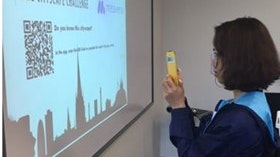Homepage
•
Learning Library
•
Blog
•
Deepen student learning with AR
Expand breadcrumbs
Expand breadcrumbs
- Learning Library
- Blog
- Deepen student learning with AR
- Homepage
- •
- Learning Library
- •
- Blog
- •
- Deepen student learning with AR
Deepen student learning with AR
By Henno Kotze
January 15, 2019








